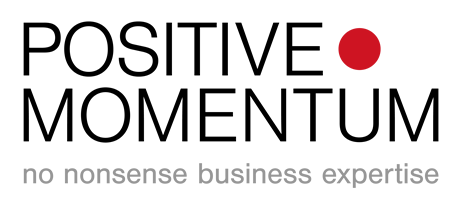I’m in Edinburgh and the year is 2008. Like a disaster in slow motion, the financial crisis has come crashing down on our heads and I, in my still youthful enthusiasm, have just taken on a role as Head of Global Media Relations for what has now become a large, troubled bank (you know the one).
I’m sitting with my new boss, who looks tired and tells me my department needs to collaborate better with Customer Relations. So off I trot to a meeting with the Head of Customer Relations. He’s very nice and spends the next thirty minutes taking me through all the customer complaints he’s been receiving. It’s the financial crisis. I listen. There are a lot. I then spend the remaining half hour of our meeting telling him about all the unpleasant media stories that were circulating about our lovely bank. He listens. There, too, are a lot. I think he likes me. But the meeting ends and we go back to business as usual.
I’m in Amsterdam and it’s 2022. I’m sitting with a friend in the park (that’s where working-from-home business people meet these days). We are discussing a common work challenge: How do you get other departments to collaborate with you?
Looking back now at that meeting in Edinburgh what seems like a lifetime ago, I realise – with the wisdom that comes with the passing of the years – that back then I didn’t know the answer to this question. I didn’t succeed in connecting professionally with the Head of Customer Relations. We could have used our meeting to share what we did. Find common ground. Notice where our paths crossed. But instead, we passed each other like ships in the night. It may seem obvious now. But back then, we weren’t able to explain what we actually did and why it might be valuable for us to work together.
Collaboration as a core value
Corporations today love to tout “collaboration” as a core value. But in reality, senior executives often end up frustrated when they conclude co-workers aren’t actually doing much working together at all. Lack of collaboration, in my view, often has less to do with colleagues deliberately not wanting to work together – except for the odd Machiavellian career climber – and more to do with the simple fact that they don’t even know what their neighbour actually does.
So, blindingly obvious as it may seem, do you actually know how to explain what you do? Why you do it? And what value it brings to your department, your function and the wider organization as a whole?
Why you should care
Does it even matter that you don’t spend time reminding others of your worth? Well, it matters when it comes to budgets, at bonus time, during a restructuring and when going for promotion. Just imagine – people might not know what your department, or worse, what you do all day long and why it matters. Your department’s contribution could end up being missed out of your company’s list achievements in quarterly results, inclusion in investor decks and internal townhalls. It also matters to your colleagues – they might not know what you do.
Having led communications departments, I too have struggled to explain to others the value of what I do. More often than not, I worked behind the scenes, keeping stories out of the media, saving potential embarrassment (justified or not) for the company and preventing a hit to our reputation and potentially share price.
I also faced a huge amount of pressure after budgets were cut to act like a marketing department and generate “free publicity”, for example by offering articles about our new products or latest initiative when journalists just weren’t interested.
And I had to fend off the notion that as Head of Communications, I was somehow chief party planner for internal events, professional PowerPoint fixer or loyal lanyard printer. That’s what corporate communications does, right? I could go on, but the point I’m making is that perhaps I hadn’t done such a great job at telling our story.
How to develop a key narrative
At Positive Momentum, through our work with clients, we’ve developed a powerful but simple tool to help you develop your own key narrative. Once you’ve written it, you can use it to communicate key messages when speaking to colleagues about your department. You can also use it to help you work better with customers and other stakeholders and to substantiate the value you bring to the organization as a whole.
So how do you figure your story out? Well, it’s basic communications. In working with clients, I’ve focused on the following:
- Figure out the top 3-5 messages you’d like to bring up when interacting with your stakeholders. What does finance do, for example? Does it approve expenses and budgets? I suspect much more.
- Substantiate each message with proof points. So, if one of HR’s main messages is employee culture – what does HR actually do to support culture?
- What is the value of your work? If corporate strategy has developed a strategy, how is this working, how well is it helping with execution and how has it contributed to revenue growth?
- Related to 3: Define how you/your department contributes to the overall corporate strategy.
- Next, define who you need to work with, what you need from them and why. Then work out a plan to speak to them. This is an integral part of networking.
- Work with your team on developing this narrative. Engage them – it can also help your team and department to feel engaged and collaborate in your department’s purpose.And I’d recommend you write it down.
- And finally, define and execute your own internal communications plan (you can do this yourself – you don’t need a communications business partner). Perhaps you can get featured on the internal communications channels? Do a stand-up at a townhall? Don’t go down the root of touting your own trumpet inauthentically but speak up, get a name, make friends.
Back to my pleasant meeting in 2008 as I was trying to bat away the media as well as ‘interference’ from my lovely colleague in Customer Relations. What could we have said to each other?
A key issue during the crisis that really naffed off our customers was the awful, process-driven correspondence they were getting about the bank’s services and products. In fact, in the absence of an adequate and coordinated response from the bank, angry customers took instead to contacting the press, telling the world how terrible these customer responses were.
Perhaps if I’d bothered to ask how we were working with our customers and what the issues were, I’d have had fewer nights on the phone to the tabloids. My colleague might also have laid out what he was doing, his struggle communicating with scared and angry customers and how he was managing it. I just couldn’t see the value of a letters meeting when I was drowning in media inquiries. What I recall is hearing the volume of letters being received which he updated in a dashboard. I’m sure I competed by showing off the volume of (terrible) media coverage.
In retrospect, I could also have explained to my colleague how I was struggling to handle the volume of press about our apparently awful services and how this was adding fuel to the fire. Perhaps we could have dedicated resources to working out how the twain should meet? All blatantly obvious. But I’m not sure I had it in my head what the value of what we both did was to each other.







